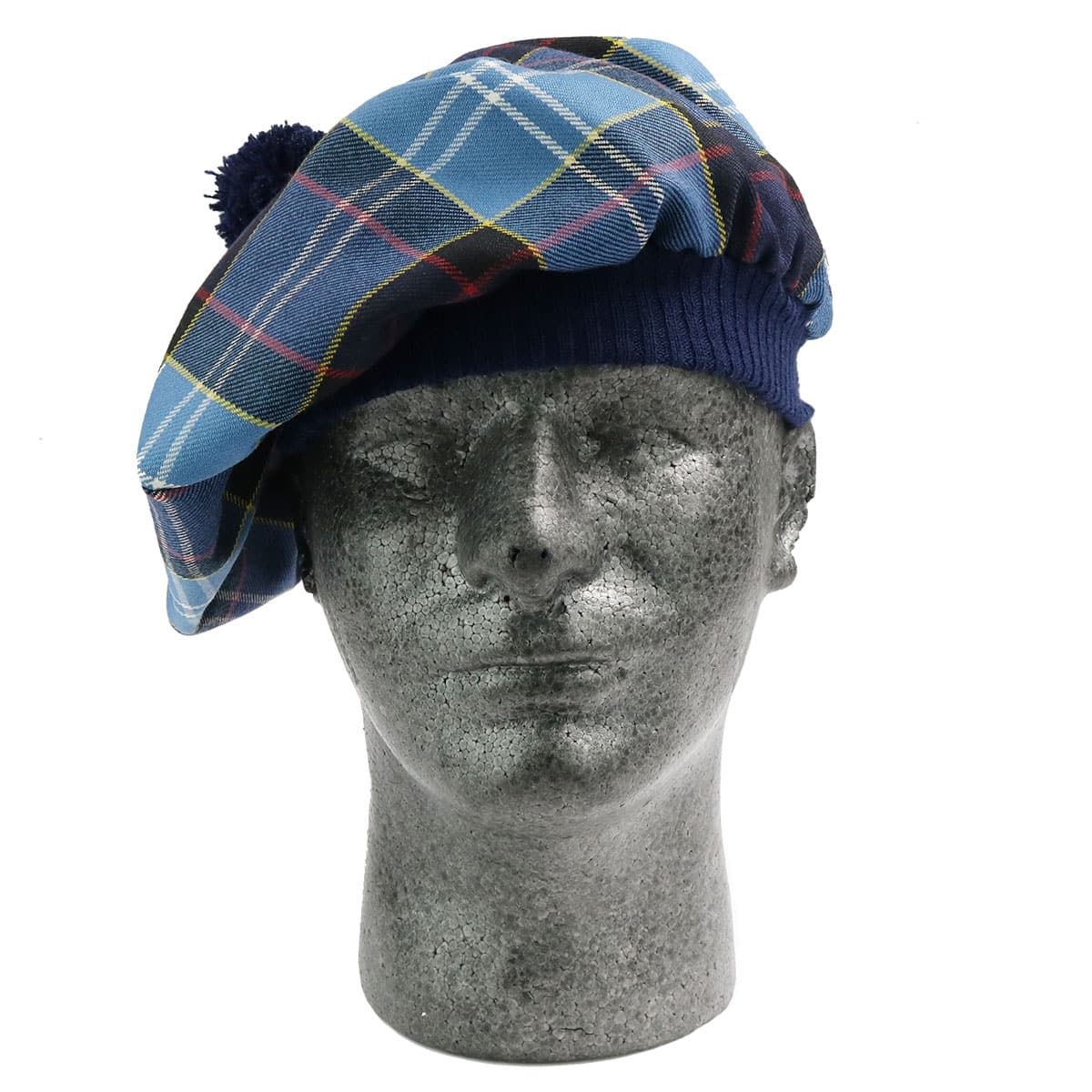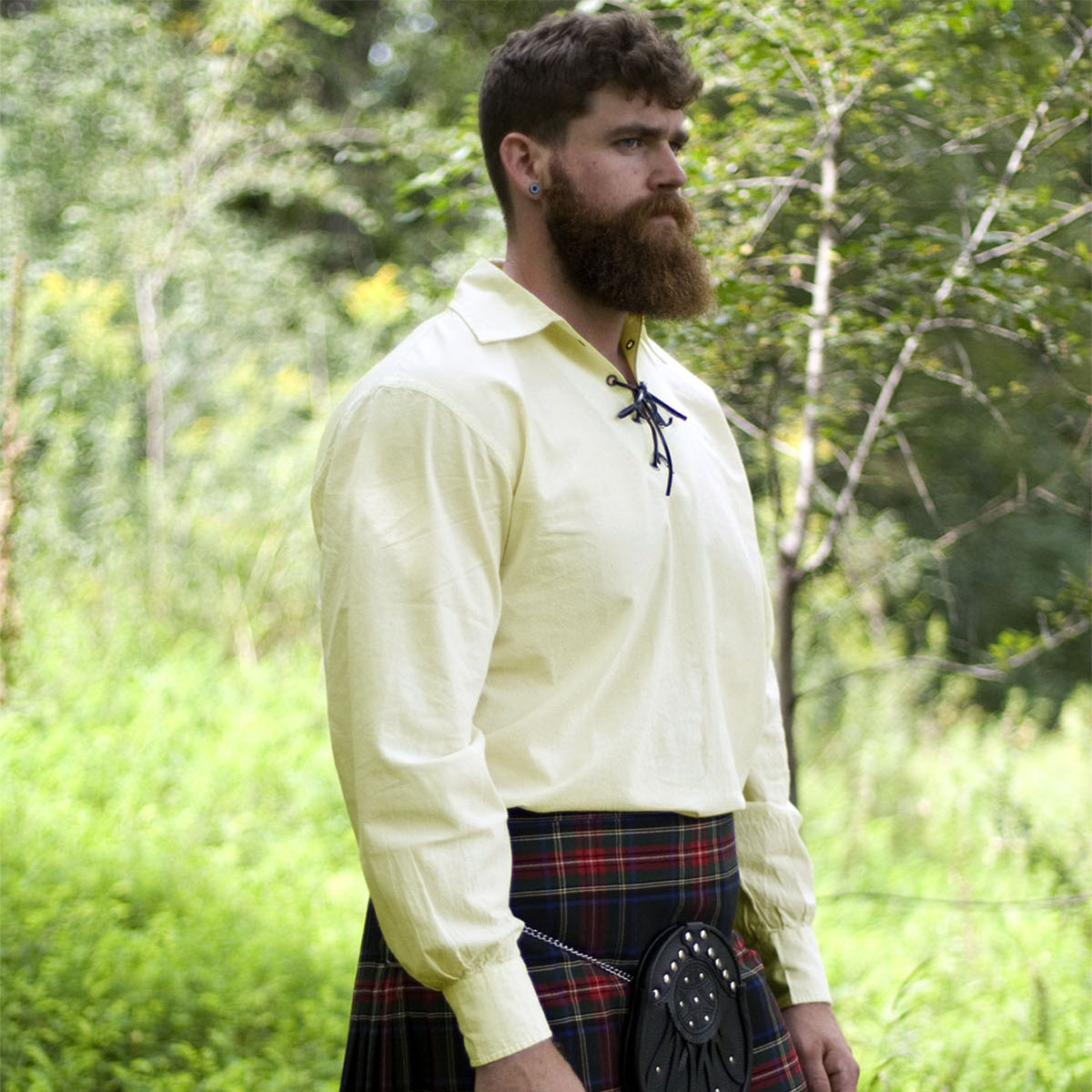It is a common misconception that all kilts are created equal, but we are about to blow your mind: they really, really aren’t. The basic premise may be the same: they are all made of material, and invite more than a little curiosity about just what lies beneath. There are, however, distinct differences between a Scottish and Irish kilt – and making a mistake could land you in seriously hot water!
We like friends, and we want to help you keep yours. To help reduce the risk of your making a faux pas, we have decided to help you get ahead of the game, and let you know what you need to know (and probably didn’t know you needed to know) about telling the difference between an Irish and Scottish kilt.
At The Celtic Croft, we specialize in all things Celtic–both Scottish and Irish. Let us help you navigate both of these rich heritages. Visit us today.
That was wordy, so without further adieu…on to the lesson!

The History
To better understand the differences between the two types of kilt, it is crucial that you know where and why they came about.
Kilts first appeared in Scotland in around the 16th century, where they were known as ‘Feileadh Mor.’ They were practical and straightforward – if not terribly stylish – and consisted of a single length of thick material, designed to protect the wearer from the harsh Highland climate.
Until 1746, the item was considered practical rather than patriotic. But, this all changed when the government banned the garment, fearing that it would increase the number of revolting revolters in the Jacobite Risings. Obviously, the nature of human beings meant that as soon as they were banned, everyone and their dog wanted one. The kilt as we know it began to emerge, reaching its final form in around the 19th century.
Ireland – as ever – decided to do things a little differently. The kilt as we now recognize it emerged out of the rise of Irish Nationalism, as the response to the so-called ‘progressive Anglicisation; of Ireland. In layman’s terms, the devout Irish rejected what they perceived as an English takeover of ideas, traditions, and dress, by popularising the rise of a distinctly Irish design.
The Saffron kilt became the style of choice. This kilt was traditionally mustard-colored, with no plaid or tartan design, but with shamrock applique attached to the pleat.
One thing both designs tend to have in common is their prevalence in battle. Both teams would use their respective kilt designs in a military setting, and this was symbolic rather than defensive. We can’t imagine wool offering too much protection!
The Differences
As well as originating from different humble beginnings, there are many features of modern-day kilts which separate the Scots and the Irish. Some of the easiest ways to figure out who you’re talking to and avoid unwanted embarrassment include:
Crests
Both Irish and Scottish kilts are decorated with distinctive crests, and these are important for identification; if the wearer feels the overwhelming urge to enter into battle, they need to know who is on their side.
Kilts are commonly worn in Scottish weddings, and this is where you are most likely to encounter the garment. Here, the clan crest of the new family will be pinned to the spouse’s tartan to show that they have been accepted – plenty of opportunity for passive aggressiveness here! Irish crests, on the other hand, tend to show a shamrock, as opposed to a clan crest.
Sporrans
Worthy of an explanation of their very own, sporrans are a standard accessory. Sporrans are usually found alongside the kilt, worn around the upper waist, and popular with both Irish and Scottish kilts. In simple terms, a sporran is similar to a pocket – an essential in a kilt that has no acceptable means of storing your belongings – let alone retrieving them in polite company without fear of arrest.
As with crests, the distinction is relatively simple; Scottish sporrans will have a clan crest for easy identification, while Irish varieties tend to favor a Celtic symbol, such as a shamrock. This feature is not much help if you forget the name of the person, but can at least help you to narrow down a geographical region.
Jackets
One of the major tells in determining an Irish or Scottish kilt is entirely separate from the garment itself: the jacket. Both sides will don a jacket to complement their kilt, but the devil is in the details.
Scots will usually wear a Prince Charlie jacket for formal occasions, and this can be identified by the lapels and the tails, as well as the embellishments on the tails and sleeves. These jackets are usually worn with a bow tie, a wing collared shirt, and a waistcoat.
Argyle jackets may also be chosen for a less formal occasion. You will easily spot these thanks to ornate buttons on the cuffs and flaps, a neck or bow tie, and a standard shirt.
Irish kilt wearers will favor a Brian Boru jacket for the most formal occasions such as weddings, and this is super similar in look, cut, and style to a Prince Charlie, so you will need to look more closely for identifying features.
A less formal situation calls for a Kilkenny jacket. This jacket is similar to a regular suit jacket, but with the addition of ornate buttons on the cuffs, as well as a regular shirt, a waistcoat, and a necktie.
Hats
Though rarely used now, on some occasions, Scottish wearers will add a Glengarry hat to complete the overall look. Which begs the question…how does one spot a Glengarry hat? Chances are this won’t be an issue, so try not to stay awake at night worrying.
Tartan
Perhaps unsurprisingly, the most significant difference between the kilts comes from the tartan. Scottish tartans symbolize a particular clan, and each family will have their unique tartan, which is determined by surname.
There are currently 25,000 registered Scottish tartans on record. You pretty much have no chance of knowing which family someone belongs to unless you have a) a photographic memory or b) an unusually generous amount of free time, but this distinction will help you to spot a Scot.
Irish tartans, on the other hand, are designed to represent the different counties and districts of Ireland. Those who hail from Cork, for example, will demonstrate this through wearing the Cork County Tartan. As a general rule, these tend to be green, but there are always exceptions.
Come to The Celtic Croft
As you can see, telling the difference between an Irish and Scottish tartan can be tricky. You need to be careful navigating until you are sure. Using our handy hacks above will help to set you on your way, and hopefully avoid any awkward encounters!
Check us out online today to see everything we offer.









